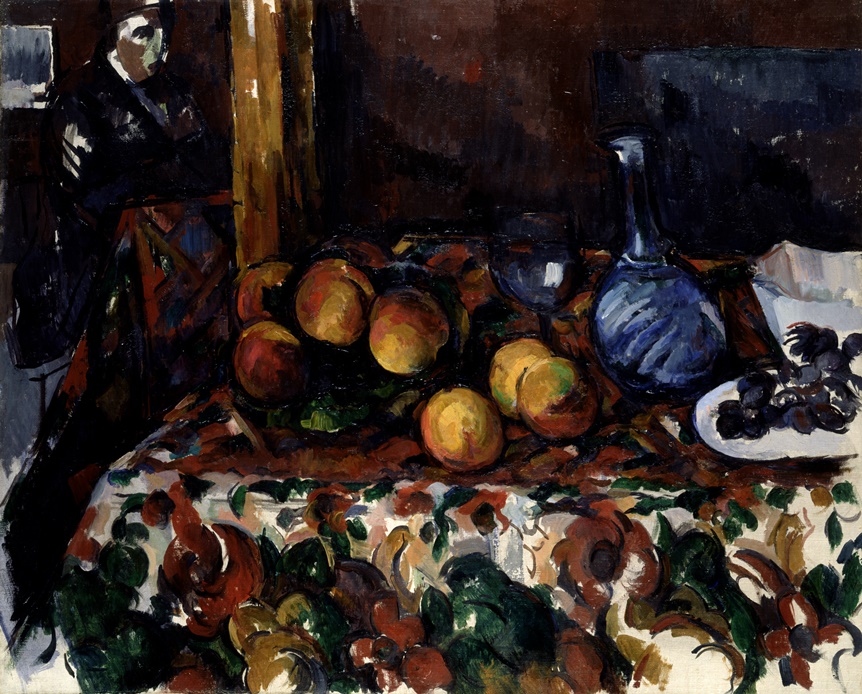
The room is dark and the figure is still, far back to the left and difficult to see. This makes the peaches all the more luminous as they rest on a tablecloth with a wild pattern of blossoms and leaves. There is also a plate of grapes, a glass, and a carafe in a rather dubious and unstable position. What Paul Cézanne has conjured up in the tradition of Dutch still life painting —relaxed and shimmering on the table—shows us a great deal: the blossoms and leaves on the tablecloth develop such an energy that they initially appear almost more lively than the peaches, the main motif. Even though they are doubly removed from reality: they are depicted motifs on a depicted tablecloth. The peaches have it easier: they are depicted, but not as part of a depicted object.
Regardless of the degree of reality in each case, virtually everything within this picture is engaged in movement. To an astonishing degree, if we add the way the white priming of the canvas shines through everywhere. This is particularly striking in the front part of the tablecloth, which takes up almost a third of the whole picture, and is particularly eye-catching in its dynamic qualities. However, the peaches are also living things in and of themselves — but, on the other hand, they are only partially secured in a semi-stable position in a small vessel. There is nothing here of nature morte: dead life, still life. In fact, this picture is quite the opposite: the blossoms, leaves, and fruit may find themselves in the distinctly sinister darkness of a somewhat stuffy room—with the haplessly gazing, immobile figure delegating its living properties and potential for action to the active elements on the table — but this lends their appearance still greater energy. Their action is so full of life that they effortlessly pulverize the tradition of the classic still life as a metaphor for transience, making an unexpected return to full life.
It is telling— in fact, it exemplifies the couple’s passion for collecting — that Sidney and Jenny Brown should have chosen this of all pictures as the first item in their collection of French Impressionist works, discovering it in November 1908 with Ambroise Vollard in Paris. It was the first work by Paul Cézanne to reach Switzerland. The Browns must have been moved by the incomplete, sketch-like quality of the picture. Even though their eyes were accustomed to the technical painterly perfection of the Munich Secession, the style for which they had, two years previously, had their impressive Karl Moser gallery erected as an extension to the villa. The painting’s dark color tones may represent yet another connection to those large-format landscapes. This painting provides yet another example of the Browns following their intuition and their delight in painting, rather than allowing themselves to be led by “safe values” or by a generally recognized style.
Markus Stegmann in: «Herzkammer», Museum Langmatt 2020